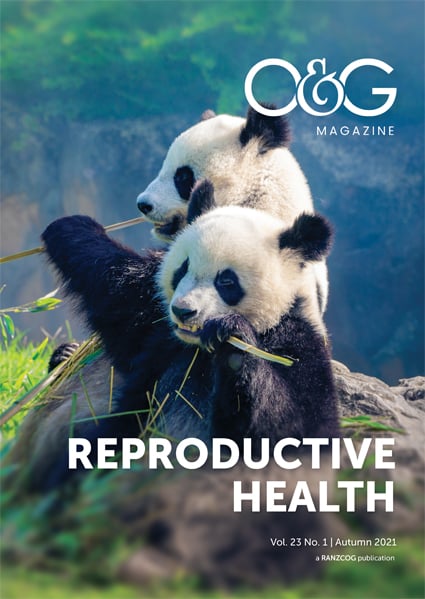Subfertility is a global problem and,as such, many couples seek assisted reproduction. This has led to over 2.5 million IVF and intracytoplasmic sperm injection (ICSI) cycles being performed annually. Over the last 40 years, techniques have improved but the pregnancy rates following an embryo transfer still remain at 35%.
Endometrial receptivity and selectivity are two complementary concepts introduced by Macklon and Brosens1 to describe how the endometrium interacts with the embryo presented to it for implantation. Selectivity is the endometrium’s intrinsic ability to recognise and reject abnormal embryos. In contrast, receptivity is when the endometrium is an optimal environment for embryo implantation and development.
Implantation failure occurs as a result of either impaired embryo development potential or impaired endometrial selectivity/receptivity. Embryos account for one third of implantation failures, while the endometrium is at fault in the remaining two-thirds of these cycles.
The endometrium and the characteristics of the window of implantation (WOI) have been studied for more than 80 years. Endometrial receptivity is characterised by a 4–5 day WOI, coordinated by an incompletely defined complex of endocrine, paracrine and autocrine factors. This limited period can be found from LH surge +6 days to LH surge +9 days in a natural cycle or from progesterone +4 days to progesterone +7 days in hormone replacement therapy (HRT) cycle. Despite increased understanding of the processes associated with embryo-endometrial cross-talk and implantation, little progress has been achieved in development of diagnostic tests and treatments for suboptimal endometrial receptivity.
Two areas that have received attention and translation to clinical usage over the last few years are the endometrial scratch, and tests assessing the molecular receptivity of the endometrium; but have they improved outcomes?
Endometrial scratch
Endometrial scratch in assisted reproduction has been advocated for over 20 years, to improve the chance of embryo implantation.
In 2000, endometrial biopsies were taken as part of a study to assess the endometrial characteristics of women, where IVF had failed to assist them in falling pregnant. The biopsies were taken during the luteal phase of the cycle preceding an IVF cycle. A chance finding was that 11 out of 12 of these subfertile women conceived after that IVF cycle.2
This led to a cascade of randomised control trials (RCTs) and subsequent reviews on endometrial scratch research. Conclusions have been everything from increased clinical pregnancy and live birth rates to no difference. Mostly the reviews suggest moderate quality studies performed on a diverse population of patients using a variety of different mechanisms to scratch with different protocols and timing. In addition to this, the biological plausibility of how a scratch is beneficial is yet to be determined. The thought is that it induces an array of pro-implantation cytokines to flood the endometrium during the window of implantation in the subsequent cycle to improve this process. Whether it is useful for implantation failure patients or for general IVF/ICSI patients, it has gained wide clinical usage with up to 83% of clinicians in some countries advising patients of this treatment option.3
The most recent review was published in 2019,4 which included 14 RCTs on 2537 participants. The effect of scratching was assessed for three distinct patient groups; IVF naive patients (Group 0), patients with one full failed IVF/ICSI cycle plus frozen transfers of cryopreserved embryos (Group 1) and patients with 2+ failed IVF/ICSI cycles plus transfer of cryopreserved embryos (Group 2).
In Group 1, no difference in clinical pregnancy rate (CPR) (RR=1.01) (95% CI 0.68–1.51) or live birth rate (LBR) (RR 1.04) (95% CI 0.74–1.45) was found. For Groups 0 and 2 pooled analysis couldn’t be done, due to heterogeneity, and the results of the individual RCTs ranged from negative to neutral to positive in support of endometrial scratch. Multiple pregnancy and miscarriage rates were assessed in each of the 3 groups; no difference was found for multiple pregnancy (RR=1.06 ) (95% CI 0.84–1.35) or miscarriage (RR=0.82 ) (95% CI 0.57–1.17).
Researchers tried to improve the heterogeneity by removing trials where control group patients had unintentional endometrial injury, such as a hysteroscopy. This did allow pooled analysis of Groups 0 and 2. Only CPR was improved in Group 0 (RR 1.28 (95% CI 1.02–1.62) and Group 2 (RR 2.03) (95% CI 1.20–3.43) but there was no difference in LBR, miscarriage or multiple pregnancy rate.5
The ultimate conclusion drawn from this review is that studies to determine if endometrial scratch is beneficial in improving implantation failure are both clinically and statistically heterogeneous due to variations in the timing, frequency and even method of intervention, patient population being treated and also definitions of the outcomes. There was also a high risk of bias in the study methodologies throughout many of the studies.6
The clinical utility of endometrial scratching is further questioned after a more recent, large RCT involving 1364 women undergoing IVF reported that scratching did not result in a higher rate of live birth than no intervention.7
It may seem that endometrial scratch is easy, but it is not without possible harm (infection, treatment burden, false hope). At best, scratching may have a positive effect on CPR in patients with recurrent implantation failure after two IVF/ICSI cycles, but the data is heterogeneous and of moderate quality only. For all other patients and outcome measures, it is likely unhelpful.
Endometrial receptivity assay
We use a number of tools, including ultrasonography and blood hormone levels, to monitor the WOI to allow for the optimum time for embryo transfer. These lack precision and objectivity because there is both inter patient and inter observer variability in these tools, plus the WOI is hard to define.
The endometrial receptivity assay (ERA) was developed as an objective tool to accurately and reproducibly determine the receptivity status of the endometrium. Using ‘omics’, ERA profiles, the transcriptome of 238 genes that are expressed at different times in the endometrial cycle which then, coupled with a computational predictor, enables personalised timing of the embryo transfer (pET).
The ERA has been demonstrated to be reproducible in patients across multiple menstrual cycles and more accurate than histological sampling.8 Its application in the clinical setting is gaining traction and research interest.
Ruiz-Alonso and others9 assessed the endometrial receptivity in 85 women scheduled to undergo frozen-thawed embryo transfer in natural or HRT cycles. ERA test identified a higher rate of non-receptive endometrium in women with recurrent implantation failure (22/85, 25.9%) compared to women without recurrent implantation failure (3/25, 12%). Women diagnosed with non-receptive endometrium on the initial ERA test achieved a pregnancy rate of 50% (4 out 8 women with follow-up data) after pET.10
More recently, researchers completed a large multicentre RCT on 458 good prognosis patients undergoing IVF with blastocyst transfer to determine if pET increased pregnancy rates over frozen embryo transfer (FET) and fresh embryo transfer in IVF.8 This was not limited to recurrent implantation failure patients. The study was hampered by a 50% drop out rate and so was underpowered to detect a statistically significant difference by intention-to-treat analysis; however they did find that cumulative pregnancy rates were higher in pET (93.6%) compared with FET (79.7%) (p=0.0005) or fresh embryo transfer (80.7%) (p=0.0013). Per protocol analysis demonstrated statistically significant improvement in pregnancy, implantation and cumulative LBR in pET compared with FET and fresh ET. Subgroup analysis considered the number of previous failed IVF cycles and suggested consistently higher percentage points in pregnancy and LBR across all groups. Of interest, they also looked at the impact of the ‘endometrial scratch’ to obtain the tissue sample for ERA and ruled out any beneficial or detrimental effect of the injury on outcomes.11
Personalised medicine is still quite new to reproductive medicine, but most specialists will agree that one size does not fit all and that modification of the timing of embryo transfer to optimal endometrial receptivity warrants ongoing focus and the ERA is likely to help improve this.
Emerging science: the endometrial microbiome
It was thought that the endometrium was a sterile environment however studies suggest a unique population of micro-organisms are present in the uterine cavity, different to that found in the cervico-vaginal environment. Given that changes in the human microbiota have been linked to several disease states, (we also know that changes in the vaginal microbiome, such as with bacterial vaginosis, has been associated with miscarriage and preterm birth) then the potential for the uterine microbiome to be linked to reproductive health outcomes warrants consideration.
New research has determined that the presence of a non-Lactobacillus-dominated microbiota in a receptive endometrium (as determined by the ERA test) is associated with a significant decrease in pregnancy and live birth rates.12 The endometrial microbiome should be considered as an emerging influence of implantation failure and pregnancy loss and is gaining traction as an area of interest for the development of diagnostic tests and treatment.
References
- Macklon NS, Brosens JJ. The human endometrium as a sensor of embryo quality. Biol Reprod. 2014;(91)98.1-8.
- Granot I, Dekel N, Bechor E, et al. Temporal analysis of connexin43 protein and gene expression throughout the menstrual cycle in human endometrium. Fertil Steril. 2000;2: 381-86.
- Lensen S, Sadler L, Farquhar C. Endometrial scratching for subfertility: everyone’s doing it. Hum Reprod. 2016;6:1241-44.
- Van Hoogenhuijze NE, Kasius JC, Broekmans FJM, et al. Endometrial scratching prior to IVF; does it help and for whom? A systematic review and meta-analysis. Hum Reprod Open. 2019 Available from www://doi.org/10.1093/hropen/hoy025
- Van Hoogenhuijze NE, Kasius JC, Broekmans FJM, et al. Endometrial scratching prior to IVF; does it help and for whom? A systematic review and meta-analysis. Hum Reprod Open. 2019 Available from www://doi.org/10.1093/hropen/hoy025
- Van Hoogenhuijze NE, Kasius JC, Broekmans FJM, et al. Endometrial scratching prior to IVF; does it help and for whom? A systematic review and meta-analysis. Hum Reprod Open. 2019 Available from www://doi.org/10.1093/hropen/hoy025
- Lensen S, Osavlyuk D, Armstrong S, et al. A randomized trial of endometrial scratching before in vitro fertilization. N Engl J Med. 2019;380:325-34.
- Tan J, Kan A, Hitkari J, et al. The role of the endometrial receptivity assay (ERA) in patients who have failed euploid embryo transfers. J Assist Reprod Genet. 2018;35:683-692.
- Ruiz-Alonzo M, Galindo N, Pellicer A, Simon C. What a difference two days make: “personalized” embryo transfer (pET) paradigm: a case report and pilot study. Hum Reprod.2014;29(6):1244-47.
- Ruiz-Alonzo M, Galindo N, Pellicer A, Simon C. What a difference two days make: “personalized” embryo transfer (pET) paradigm: a case report and pilot study. Hum Reprod.2014;29(6):1244-47.
- Simon C, Gomez C, Cabanillas S, et al. A 5-year multicentre randomized controlled trial comparing personalized, frozen and fresh blastocyst transfer in IVF. Reprod Biomed Online. 2020; 41(3):402-15.
- Morena I, Codoner FM, Vilella F, et al. Evidence that the endometrial microbiota has an effect on implantation success or failure. Am J Obstet Gynec.2016;215(6):684-703.






Leave a Reply